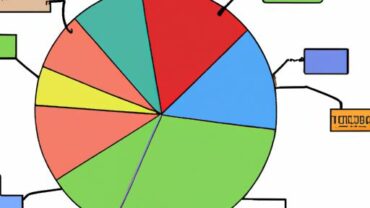The Power of Data Analytics and Insights
Introduction
In today’s fast-paced business landscape, the ability to harness data analytics and insights has become a key differentiator for companies striving to stay ahead of the curve. But what exactly do we mean when we talk about data analytics and insights?
A. Definition of Data Analytics and Insights
Data analytics is the process of analyzing large sets of data to uncover hidden patterns, correlations, and trends. It involves the use of various tools and techniques to extract valuable insights that can drive informed decision-making and strategic planning.
B. Importance of Data Analytics in Business
Data analytics plays a crucial role in helping businesses make sense of the vast amounts of data they collect on a daily basis. By leveraging data analytics, organizations can gain a deeper understanding of their customers, optimize operations, identify new growth opportunities, and mitigate risks. In today’s data-driven world, the ability to turn raw data into actionable insights can mean the difference between success and failure. So, are you ready to unlock the power of data analytics and insights to propel your business forward?
Understanding Data Analytics
A. Types of Data Analytics
When delving into the realm of data analytics, it’s essential to understand the various types that exist to extract meaningful insights.
1. Descriptive Analytics
Descriptive analytics focuses on summarizing historical data to provide insights into what has happened in the past. It helps in gaining a better understanding of the current state of affairs within the business.
2. Diagnostic Analytics
Diagnostic analytics delves deeper into the why and how behind certain events or trends identified through descriptive analytics. It aims to uncover the root causes of specific outcomes.
3. Predictive Analytics
Predictive analytics utilizes statistical algorithms and machine learning techniques to forecast future outcomes based on historical data. It enables businesses to anticipate trends and make proactive decisions.
4. Prescriptive Analytics
Prescriptive analytics goes a step further by not only predicting future outcomes but also recommending actions to optimize those outcomes. It provides actionable insights to drive strategic decision-making.
B. Tools and Techniques for Data Analytics
In the world of data analytics, a plethora of tools and techniques are available to analyze and interpret data effectively. From data visualization tools like Tableau to advanced machine learning algorithms, these tools empower organizations to derive valuable insights from their data. By leveraging the right tools and techniques, businesses can unlock the full potential of their data and drive informed decision-making.
Benefits of Data Analytics and Insights
A. Improved Decision Making
Data analytics empowers organizations to make data-driven decisions based on accurate and timely insights. By analyzing historical data and predicting future trends, businesses can make informed choices that lead to better outcomes. With data analytics, you can say goodbye to gut feelings and hello to strategic decision-making that drives success.
B. Enhanced Business Performance
Implementing data analytics can significantly enhance business performance by optimizing processes, reducing costs, and increasing efficiency. By leveraging data insights, organizations can identify areas for improvement, streamline operations, and maximize their resources. With data analytics, you can unlock the full potential of your business and achieve new levels of success.
C. Competitive Advantage
In today’s competitive business landscape, gaining a competitive advantage is essential for long-term success. Data analytics provides organizations with a powerful tool to stay ahead of the competition by uncovering insights that drive innovation, improve customer experiences, and identify new market opportunities. By harnessing the power of data analytics, businesses can differentiate themselves in the market and position themselves as industry leaders.
Challenges in Implementing Data Analytics
A. Data Quality Issues
One of the primary challenges organizations face when implementing data analytics is ensuring the quality of the data being analyzed. Poor data quality can lead to inaccurate insights and flawed decision-making, ultimately undermining the value of data analytics initiatives. It is crucial for businesses to establish data quality standards, implement data cleansing processes, and regularly monitor data integrity to ensure the reliability and accuracy of their analytics results.
B. Lack of Skilled Professionals
Another significant hurdle in the successful implementation of data analytics is the shortage of skilled professionals with expertise in data analysis, statistics, and data visualization. As the demand for data analytics professionals continues to rise, organizations are finding it increasingly difficult to attract and retain top talent in this field. Investing in training programs, partnering with educational institutions, and leveraging data analytics tools with user-friendly interfaces can help bridge the skills gap and empower employees to effectively leverage data for decision-making.
C. Data Security Concerns
Data security is a paramount concern for businesses embarking on data analytics initiatives. With the growing volume of data being collected and analyzed, organizations must prioritize data protection to safeguard sensitive information from cyber threats and data breaches. Implementing robust data encryption protocols, access controls, and compliance measures can help mitigate security risks and ensure the confidentiality and integrity of data throughout the analytics process. By addressing these challenges proactively, organizations can maximize the value of data analytics while safeguarding their data assets.
Best Practices for Data Analytics and Insights
A. Data Governance
Data governance is the foundation of a successful data analytics strategy. It involves establishing policies, procedures, and controls to ensure the quality, integrity, and security of data across the organization. By implementing robust data governance practices, businesses can enhance data accuracy, reliability, and trustworthiness, ultimately leading to more informed decision-making and improved business outcomes.
B. Data Visualization
Data visualization is a powerful tool that allows businesses to communicate complex data in a visual format, making it easier for stakeholders to understand and interpret. By presenting data in visually appealing charts, graphs, and dashboards, organizations can uncover patterns, trends, and insights that may have otherwise gone unnoticed. Effective data visualization not only enhances data comprehension but also facilitates faster and more informed decision-making.
C. Continuous Learning and Improvement
In the ever-evolving field of data analytics, continuous learning and improvement are essential for staying ahead of the curve. By investing in ongoing training, upskilling, and professional development opportunities for employees, organizations can ensure that their teams are equipped with the latest tools, techniques, and best practices in data analytics. Embracing a culture of continuous learning and improvement can drive innovation, foster creativity, and ultimately lead to better business results.
Conclusion
As we wrap up our exploration of data analytics and insights, it’s clear that the ability to harness the power of data is more important than ever in today’s business landscape. By leveraging data analytics tools and techniques, organizations can unlock valuable insights that drive informed decision-making, improve performance, and gain a competitive edge.
In a world where data is king, those who can effectively analyze and interpret data will have a distinct advantage. By implementing best practices, overcoming challenges, and staying abreast of emerging trends in data analytics, businesses can position themselves for success in the digital age. So, are you ready to embrace the transformative potential of data analytics and insights in your organization?





